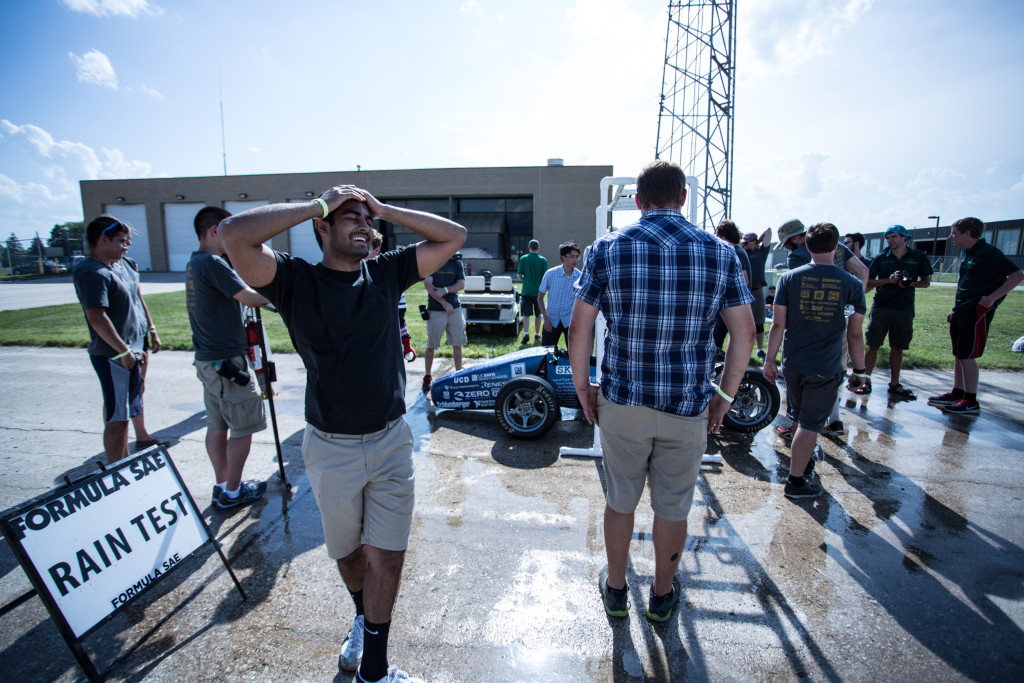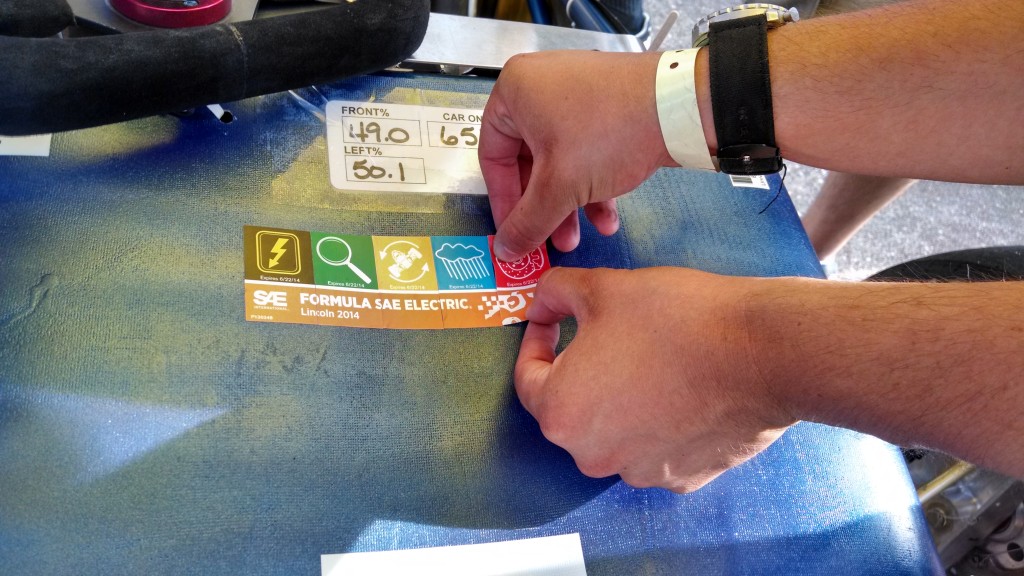Tilt, Rain, and Brake
After making it out of E-tech, we went through mechanical tech with relatively little trouble, and I managed to figure out how to exit the vehicle in the allotted time despite never having tried to do so before… on to the tilt test, rain test and finally the brake test.
The tilt table test, although terrifying, was uneventful. One down.
The rain test was an absolute nail-biter. We were in a mad rush to make it through the remainder of the tech inspection stations on Friday afternoon, so there was really no time for me to think about any last-minute preparations or applications of duck-tape, so we just rolled it in. I can’t exaggerate when I say those were really scary minutes while the car was under the sprinkler with the traction system completely active.
But– No un-commanded motion, no faults and no insulation monitoring device faults! Not then, or later! And, no duck-tape. Singularly, one of my proudest accomplishments of the event, and unique among the cars which passed the rain test in 2014!
Relief.
Finally, the brake test. Now, after all the hypotheticals, does it actually run? As we lined up at the starting line at the brake test area with only a few minutes before closing, it was now just the most important question. And, I pinned it. And there was not enough torque to pick up enough speed over the runway to lock the brakes. Something was seriously wrong. I tried again, same exact deal. That, and the turning circle was so large it was impossible to make the U-turn at the far end of the brake test. And then the BMS faulted. And the dashboard, which reported BMS data via CAN disappeared.
The loss of instrumentation would not be a functional issue, but the dash also issued a CAN command to the BMS to enter operational state, until which it wouldn’t provide the required “System OK” signal. It appeared that the microcontroller module that ran the dash had begun to corrode in the extreme humidity during the previous all-nighter working on the wiring harness, and had given up the ghost when moistened during the rain test.
Another thing had happened during that all-nighter– in order to make sure all the functional tests administered earlier in the day would pass, some scaling resistors had to be changed in the throttle signal pathway, halving the voltage range output of the throttle, which allowed the supervisory systems to detect broken or disconnected sensors. The changes had fixed the supervisory shutdown problem, but we hadn’t remembered to reprogram the new voltage range into the motor controllers.
The goal became clear: convince the brake test to stay open just a bit longer so that we could disconnect the nonfunctional dashboard, issue the startup command with a laptop, hard-reset the BMS, and reprogram the motor controller throttle voltage response. Which, due to some design oversight required removing the seat and firewall to get at the programming connectors. The brake test staff gave us their ultimatum: we must be ready by the time the combustion team sitting on the starting line either gave up or was able to start their engine.
The team snapped into action and flew across the paddock to retrieve wrenches, my laptop and various adapters. We pulled the seat, reprogrammed the first inverter, and the second. Threw the seat back in, put my helmet back on, and just as the other team threw in the towel, rolled up to the start line. Now running 50% torque limit, instead of <25%, the car picked up speed dramatically, and never has flat spotting a set of tires been such a fantastic feeling.
Only three teams that year got the chance to fill out every tech sticker!




